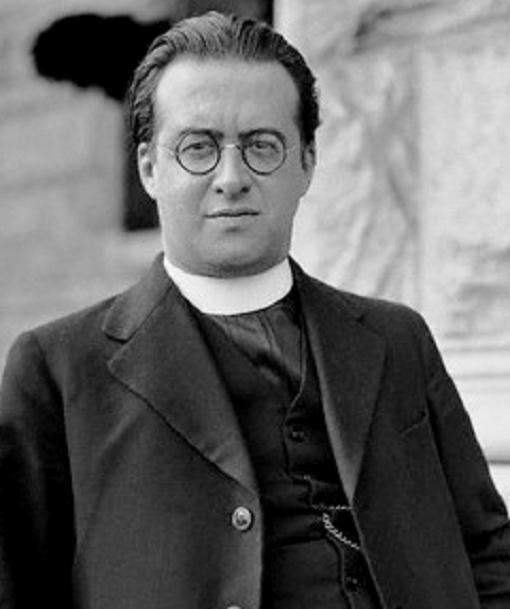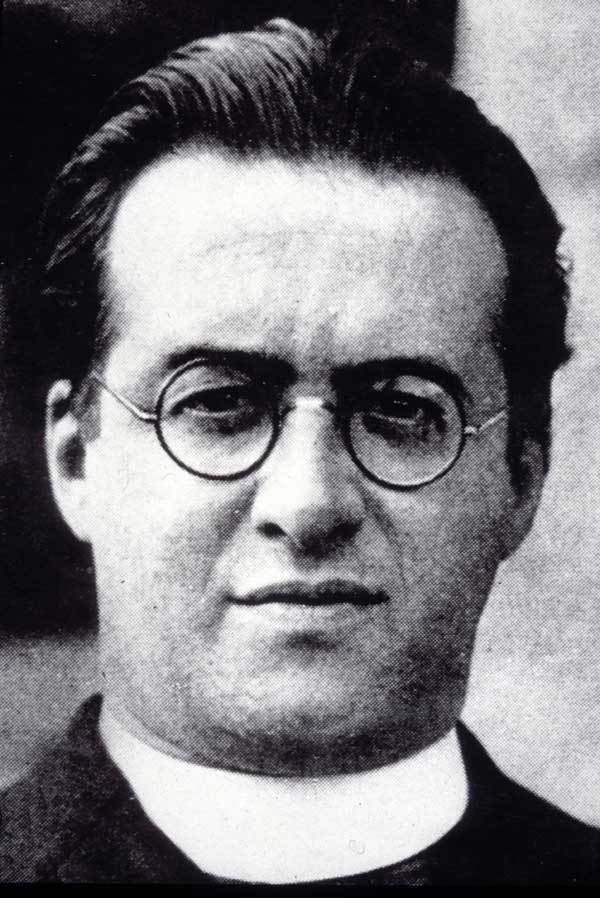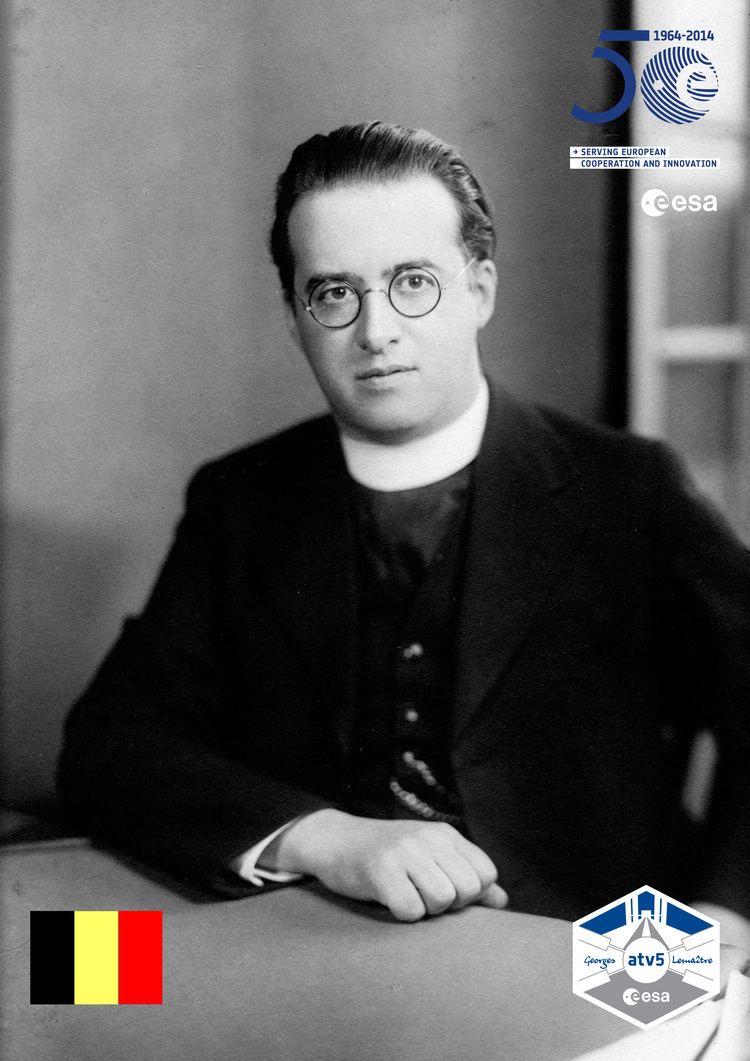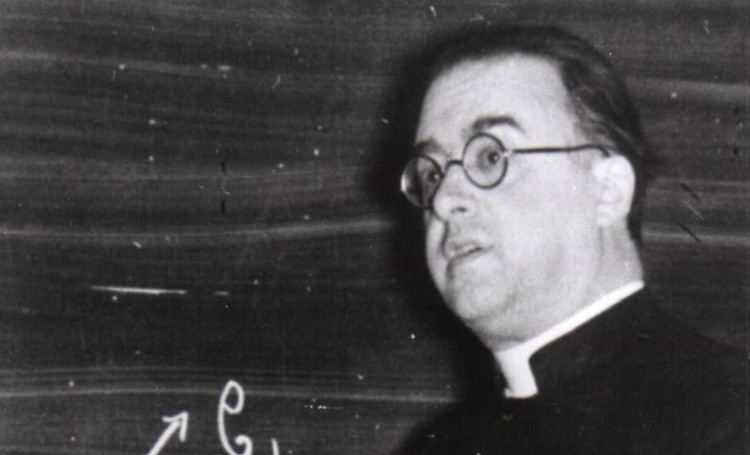Nationality Belgian Name Georges Lemaitre | Role Astronomer | |
 | ||
Alma mater Catholic University of LeuvenUniversity of CambridgeMassachusetts Institute of Technology (PhD) Doctoral students Louis Philippe Bouckaert, Rene van der Borght Known for Theory of the expansion of the universeBig Bang theoryLemaitre coordinates Died June 20, 1966, Leuven, Belgium Parents Maguerite Lannoy, Joseph Lemaitre Books The Expanding Universe: Lemaitre\'s Unknown Manuscript Education Similar People | ||
Georges Lemaître: Google marks 124th birth anniversary of Big Bang Theory astronomer
Georges Henri Joseph Édouard Lemaître Associate RAS ([ʒɔʁʒə ləmɛtʁ]; 17 July 1894 – 20 June 1966) was a Belgian priest, astronomer and professor of physics at the Catholic University of Leuven. He proposed the theory of the expansion of the universe, widely misattributed to Edwin Hubble. He was the first to derive what is now known as Hubble's law and made the first estimation of what is now called the Hubble constant, which he published in 1927, two years before Hubble's article. Lemaître also proposed what became known as the Big Bang theory of the origin of the universe, which he called his "hypothesis of the primeval atom" or the "Cosmic Egg".
Contents
- Georges Lematre Google marks 124th birth anniversary of Big Bang Theory astronomer
- Fr georges lema tre father of the big bang flv
- Early life
- Career
- Work
- Honours
- Namesakes
- References

Fr georges lema tre father of the big bang flv
Early life

After a classical education at a Jesuit secondary school, the Collège du Sacré-Coeur, in Charleroi, Lemaître began studying civil engineering at the Catholic University of Leuven at the age of 17. In 1914, he interrupted his studies to serve as an artillery officer in the Belgian army for the duration of World War I. At the end of hostilities, he received the Belgian War Cross with palms.

After the war, he studied physics and mathematics, and began to prepare for the diocesan priesthood, not for the Jesuits. He obtained his doctorate in 1920 with a thesis entitled l'Approximation des fonctions de plusieurs variables réelles (Approximation of functions of several real variables), written under the direction of Charles de la Vallée-Poussin. He was ordained a priest in 1923.

In 1923, he became a graduate student in astronomy at the University of Cambridge, spending a year at St Edmund's House (now St Edmund's College, Cambridge). He worked with Arthur Eddington, who introduced him to modern cosmology, stellar astronomy, and numerical analysis. He spent the next year at Harvard College Observatory in Cambridge, Massachusetts, with Harlow Shapley, who had just gained renown for his work on nebulae, and at the Massachusetts Institute of Technology (MIT), where he registered for the doctoral program in sciences.
Career

In 1925, on his return to Belgium, he became a part-time lecturer at the Catholic University of Leuven. He then began the report which brought him international fame when he published it in 1927 in the Annales de la Société Scientifique de Bruxelles (Annals of the Scientific Society of Brussels) under the title "Un Univers homogène de masse constante et de rayon croissant rendant compte de la vitesse radiale des nébuleuses extragalactiques" ("A homogeneous Universe of constant mass and growing radius accounting for the radial velocity of extragalactic nebulae"). In this report, he presented his new idea of an expanding universe, derived from Hubble's law, and provided the first observational estimation of the Hubble constant but not yet that of the primeval atom. Instead, the initial state was taken as Einstein's own finite-size static universe model. The paper had little impact because the journal in which it was published was not widely read by astronomers outside Belgium; Arthur Eddington reportedly helped translate his article into English in 1931, but the part of it pertaining to the estimation of the "Hubble constant" was not included in the translation for reasons that have never been properly explained.

At this time, Einstein, while not taking exception to the mathematics of Lemaître's theory, refused to accept the idea of an expanding universe; Lemaître recalled him commenting "Vos calculs sont corrects, mais votre physique est abominable" ("Your calculations are correct, but your physics is atrocious.") The same year, Lemaître returned to MIT to present his doctoral thesis on The gravitational field in a fluid sphere of uniform invariant density according to the theory of relativity. Upon obtaining his Ph.D., he was named ordinary professor at the Catholic University of Leuven.
In 1930, Eddington published in the Monthly Notices of the Royal Astronomical Society a long commentary on Lemaître's 1927 article, in which he described the latter as a "brilliant solution" to the outstanding problems of cosmology. The original paper was published in an abbreviated English translation in 1931, along with a sequel by Lemaître responding to Eddington's comments. Lemaître was then invited to London to participate in a meeting of the British Association on the relation between the physical universe and spirituality. There he proposed that the universe expanded from an initial point, which he called the "Primeval Atom". He developed this idea in a report published in Nature. Lemaître himself also described his theory as "the Cosmic Egg exploding at the moment of the creation"; it became better known as the "Big Bang theory," a pejorative term coined during a 1949 BBC radio broadcast by the astronomer Fred Hoyle, who was then still a proponent of the steady state universe and remained so until his death in 2001.
Lemaître's proposal met with skepticism from his fellow scientists. Eddington found Lemaître's notion unpleasant. Einstein found it suspect because he deemed it unjustifiable from a physical point of view. On the other hand, Einstein encouraged Lemaître to look into the possibility of models of non-isotropic expansion, so it is clear he was not altogether dismissive of the concept. He also appreciated Lemaître's argument that a static-Einstein model of the universe could not be sustained infinitely into the past.
In January 1933, Lemaître and Einstein, who had met on three occasions—in 1927 in Brussels, at the time of a Solvay Conference, in 1932 in Belgium, at the time of a cycle of conferences in Brussels, and in 1935 at Princeton—traveled together to attend a series of seminars in California. After the Belgian detailed his theory, Einstein stood up, applauded, and is supposed to have said, "This is the most beautiful and satisfactory explanation of creation to which I have ever listened." However, there is disagreement over the reporting of this quote in the newspapers of the time, and it may be that Einstein was not actually referring to the theory as a whole but to Lemaître's proposal that cosmic rays may in fact be the leftover artifacts of the initial "explosion". Later research on cosmic rays by Robert Millikan undercut this proposal.
In 1933, when he resumed his theory of the expanding universe and published a more detailed version in the Annals of the Scientific Society of Brussels, Lemaître achieved his greatest public recognition. Newspapers around the world called him a famous Belgian scientist and described him as the leader of the new cosmological physics.
In 1936, he was elected member of the Pontifical Academy of Sciences. He took an active role there, and served as its president from March 1960 until his death. During the Second Vatican Council he was asked to serve on the first special commission to examine the question of contraception. However, since his health made it impossible for him to travel to Rome–he had suffered a heart attack in December 1964–Lemaître demurred, expressing his surprise that he was even chosen. He told a Dominican colleague, Pere Henri de Riedmatten, that he thought it was dangerous for a mathematician to venture outside of his area of expertise. He was also named prelate (Monsignor) in 1960 by Pope John XXIII.
In 1941, he was elected a member of the Royal Academy of Sciences and Arts of Belgium.
In 1946, he published his book on L'Hypothèse de l'Atome Primitif (The Primeval Atom Hypothesis). It was translated into Spanish in the same year and into English in 1950.
By 1951, Pope Pius XII declared that Lemaître's theory provided a scientific validation for Catholicism. However, Lemaître resented the Pope's proclamation, stating that the theory was neutral and there was neither a connection nor a contradiction between his religion and his theory. When Lemaître and Daniel O'Connell, the Pope's science advisor, tried to persuade the Pope not to mention Creationism publicly anymore, the Pope agreed. He persuaded the Pope to stop making proclamations about cosmology. While a devout Roman Catholic, he was against mixing science with religion, though he also was of the opinion that these two fields of human experience were not in conflict.
During the 1950s, he gradually gave up part of his teaching workload, ending it completely when he took emeritus status in 1964.
At the end of his life, he was increasingly devoted to problems of numerical calculation. He was in fact a remarkable algebraicist and arithmetical calculator. Since 1930, he used the most powerful calculating machines of the time, the Mercedes. In 1958 he was introduced to the University's Burroughs E 101, its first electronic computer. Lemaître maintained a strong interest in the development of computers and, even more, in the problems of language and computer programming.
He died on 20 June 1966, shortly after having learned of the discovery of cosmic microwave background radiation, which provided further evidence for his proposal about the birth of the universe.
In 2005, Lemaître was voted to the 61st place of De Grootste Belg ("The Greatest Belgian"), a Flemish television program on the VRT. In the same year he was voted to the 78th place by the audience of the Les plus grands Belges ("The Greatest Belgians"), a television show of the RTBF.
Work
Lemaître was a pioneer in applying Albert Einstein's theory of general relativity to cosmology. In a 1927 article, which preceded Edwin Hubble's landmark article by two years, Lemaître derived what became known as Hubble's law and proposed it as a generic phenomenon in relativistic cosmology. Lemaître also estimated the numerical value of the Hubble constant. However, the data used by Lemaître did not allow him to prove that there was an actual linear relation, which Hubble did two years later.
Einstein was skeptical of this paper. When Lemaître approached Einstein at the 1927 Solvay Conference, the latter pointed out that Alexander Friedmann had proposed a similar solution to Einstein's equations in 1922, implying that the radius of the universe increased over time. (Einstein had also criticized Friedmann's calculations, but withdrew his comments.) In 1931, his annus mirabilis, Lemaître published an article in Nature setting out his theory of the "primeval atom."
Friedmann was handicapped by living and working in the USSR, and died in 1925, soon after inventing the Friedmann–Lemaître–Robertson–Walker metric. Because Lemaître spent his entire career in Europe, his scientific work is not as well known in the United States as that of Hubble or Einstein, both well known in the U.S. by virtue of residing there. Nevertheless, Lemaître's theory changed the course of cosmology. This was because Lemaître:
Both Friedmann and Lemaître proposed relativistic cosmologies featuring an expanding universe. However, Lemaître was the first to propose that the expansion explains the redshift of galaxies. He further concluded that an initial "creation-like" event must have occurred. In the 1980s, Alan Guth and Andrei Linde modified this theory by adding to it a period of inflation.
Einstein at first dismissed Friedmann, and then (privately) Lemaître, out of hand, saying that not all mathematics lead to correct theories. After Hubble's discovery was published, Einstein quickly and publicly endorsed Lemaître's theory, helping both the theory and its proposer get fast recognition.
Lemaître was also an early adopter of computers for cosmological calculations. He introduced the first computer to his university (a Burroughs E101) in 1958 and was one of the inventors of the Fast Fourier transform algorithm.
In 1933, Lemaître found an important inhomogeneous solution of Einstein's field equations describing a spherical dust cloud, the Lemaître–Tolman metric.
In 1931, Lemaitre was the first scientist to propose the expansion of the universe was actually accelerating which was confirmed observationally in the 1990s through observations of very distant Type IA supernova with the Hubble Space Telescope.
In 1948 Lemaître published a polished mathematical essay "Quaternions et espace elliptique" which clarified an obscure space. William Kingdon Clifford had cryptically described elliptic space in 1873 at a time when versors were too common to mention. Lemaître developed the theory of quaternions from first principles so that his essay can stand on its own, but he recalled the Erlangen program in geometry while developing the metric geometry of elliptic space. H. S. M. Coxeter, another contributor to elliptic geometry, summarized Lemaître's work for Mathematical Reviews.
Honours
On 17 March 1934, Lemaître received the Francqui Prize, the highest Belgian scientific distinction, from King Léopold III. His proposers were Albert Einstein, Charles de la Vallée-Poussin and Alexandre de Hemptinne. The members of the international jury were Eddington, Langevin, Théophile de Donder and Marcel Dehalu. Another distinction that the Belgian government reserves for exceptional scientists was allotted to him in 1950: the decennial prize for applied sciences for the period 1933–1942.
In 1953, he was given the inaugural Eddington Medal awarded by the Royal Astronomical Society.
